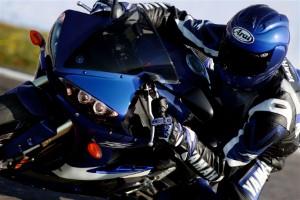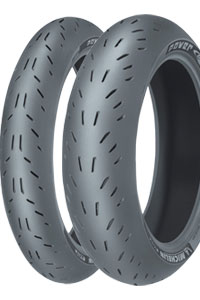Michelin Power One Race Tire Review


Those who follow MotoGP closely know that Michelin has lost to
Bridgestone as the official motorcycle tire provider. However,
despite the fact that the company isn't the main supplier for the
premier competition anymore, that doesn't mean Michelin gave up on
sport bike tires. In fact, the company's massive R&D department
has continued to devote plenty of its resources to high-performance
bikes, and the [mageProductLink sku="190-9136" title=""]Michelin
Power One Race Tire[/mageProductLink] is the result.
The [mageProductLink sku="190-9130" title=""]Power
One[/mageProductLink] is the new top-of-the-line racing tire from
Michelin, and is
made for high-end sport bikes like the Yamaha R1.
Riders have a choice between three different types of tires that
all bear the Power One name. The 17-inch version is DOT-approved,
which means that riders don't have to worry about its legality on
streets and highways. This is the tire for riders who have a sport
bike, but don't necessarily spend all of their time at the
track.

Still, this tire does the absolute bare minimum for DOT approval.
The tread pattern covers just five percent of the surface of the
tire with actual tread, which is the lowest amount legally
possible. Essentially, this is a street-legal tire that tries its
best not to compromise on performance, and only those experienced
with sport bikes should consider it. If you're primarily going to
be riding away from the track, you'll probably want to go in a
different direction.
There's also a 16.5-inch tire that is not DOT-approved, and thus
can only be used on track day. This is the motorcycle tire for the
serious racer who is building a bike for competition. There are
also Power One rain tires for when conditions get a bit
slippery.
The front tires come in several variations - either "A," "B" or
"V," and all of them alter how the bike performs. The A tire is a
five-ply construction with a soft compound, while the B tire is
essentially the same thing with a slightly stronger medium
compound. The V tire is the most radically different, using a
four-ply construction that gives the tire a pointy, almost
triangular shape that is said to improve responsiveness on
cornering. This type has especially has become very popular with
many sport bike racers.
You'll be able to tell which version you have by looking on the
tire itself - it should be marked with one of the letters. If not,
you're probably using the rain or DOT-legal version of the Power
One.
Similarly, the rear tires also have several options available -
"A," "B," "C" or "D." The A, B and C tires are all made of four-ply
construction, with increased compound strength for each one - A is
the softest, while C is the hardest. The D is a specially-designed
tire for use on tracks with high-speed banked corners, like
Daytona. The tire's three-ply construction allows for much better
handling on these corners.
With Michelin out of MotoGP, some might assume that these are
second-tier tires. In short, they're not. The Michelin Power One
Race Tires are some of the most critically-acclaimed sport bike
tires on the market. Major racing publications have praised the
tires' incredible grip and superior handling on just about every
track. The company may not be as visible as they once were when
they were supplying tires to the likes of Valentino Rossi. However,
the Power One is a clear indication that Michelin is not exiting
the sport bike tire arena anytime soon - and most racers who try
these tires will agree that that's a good thing.
